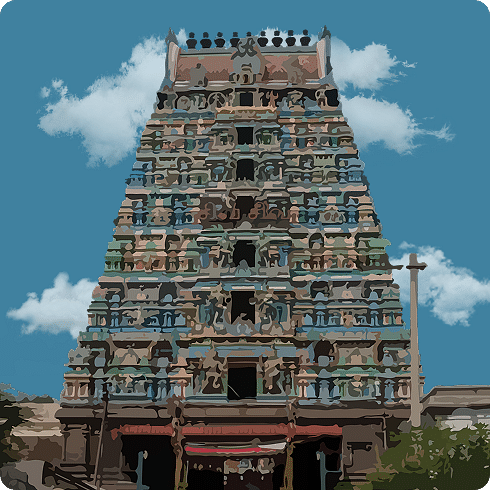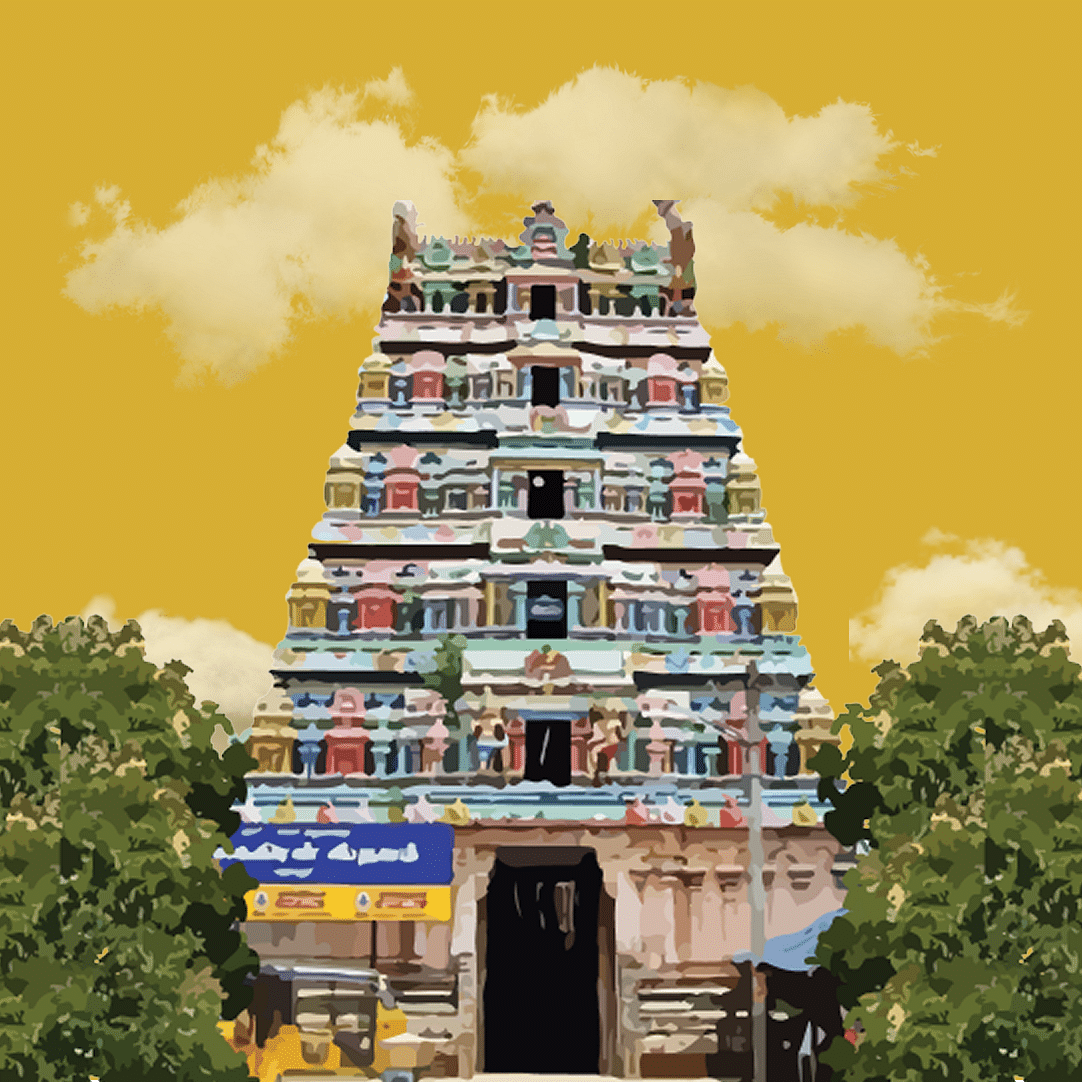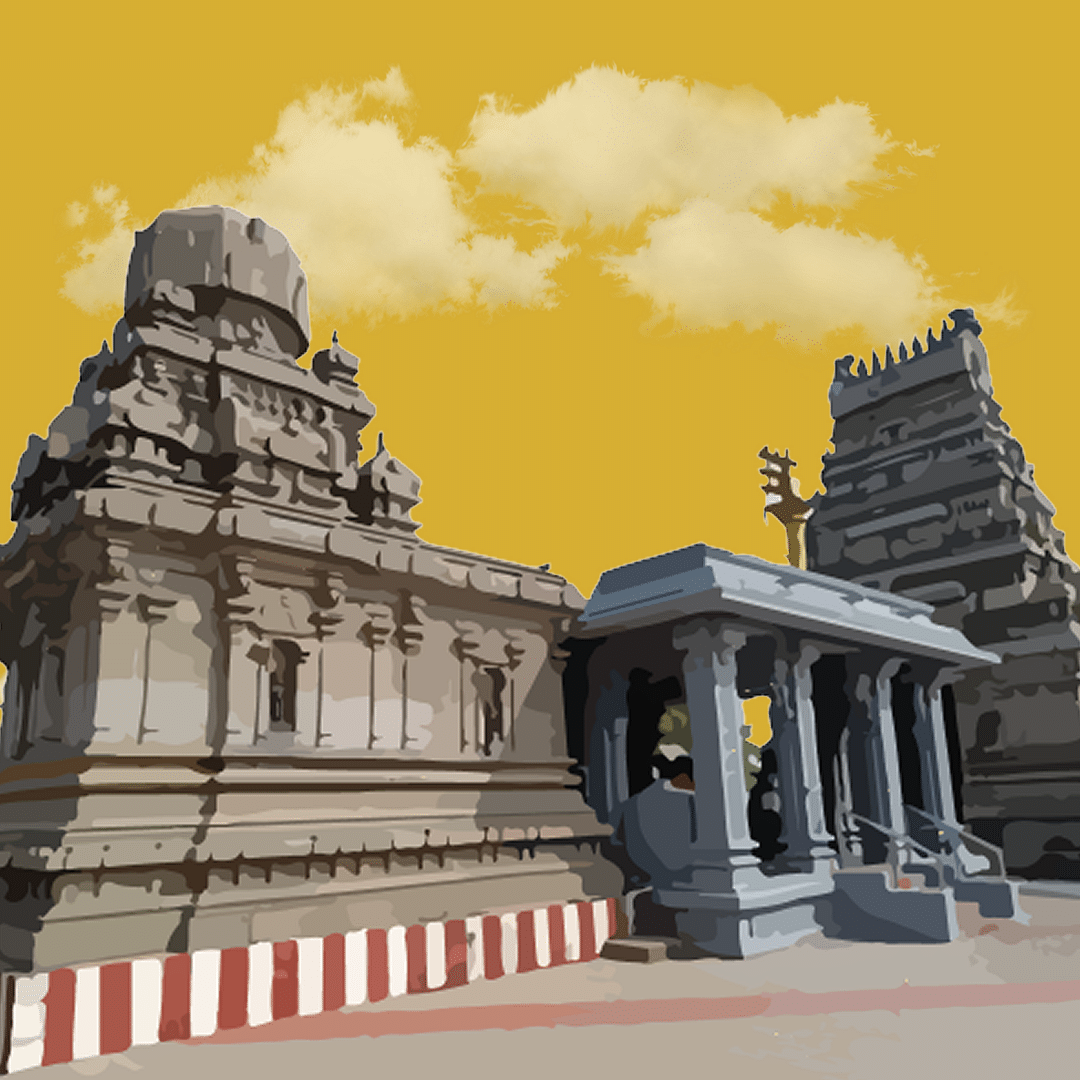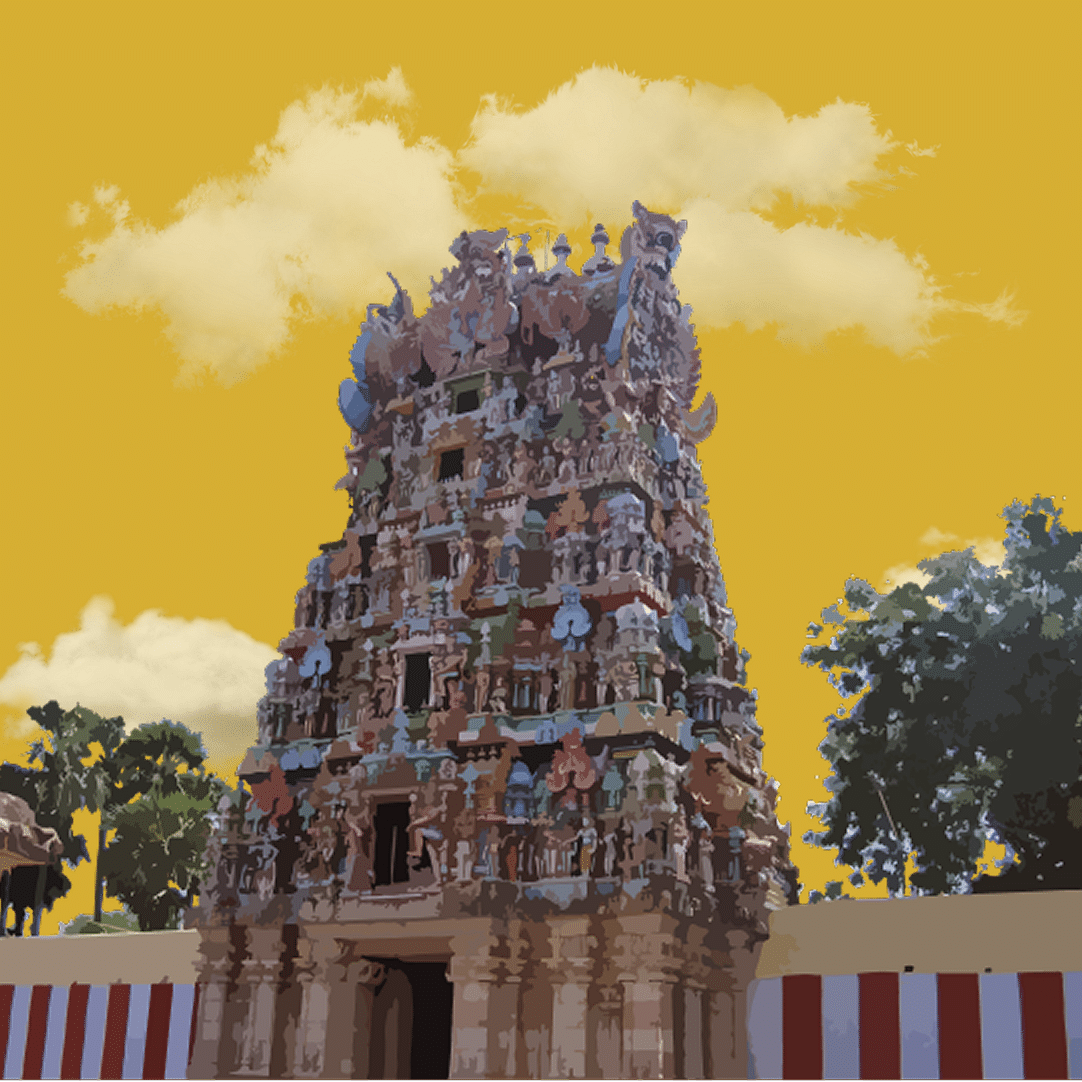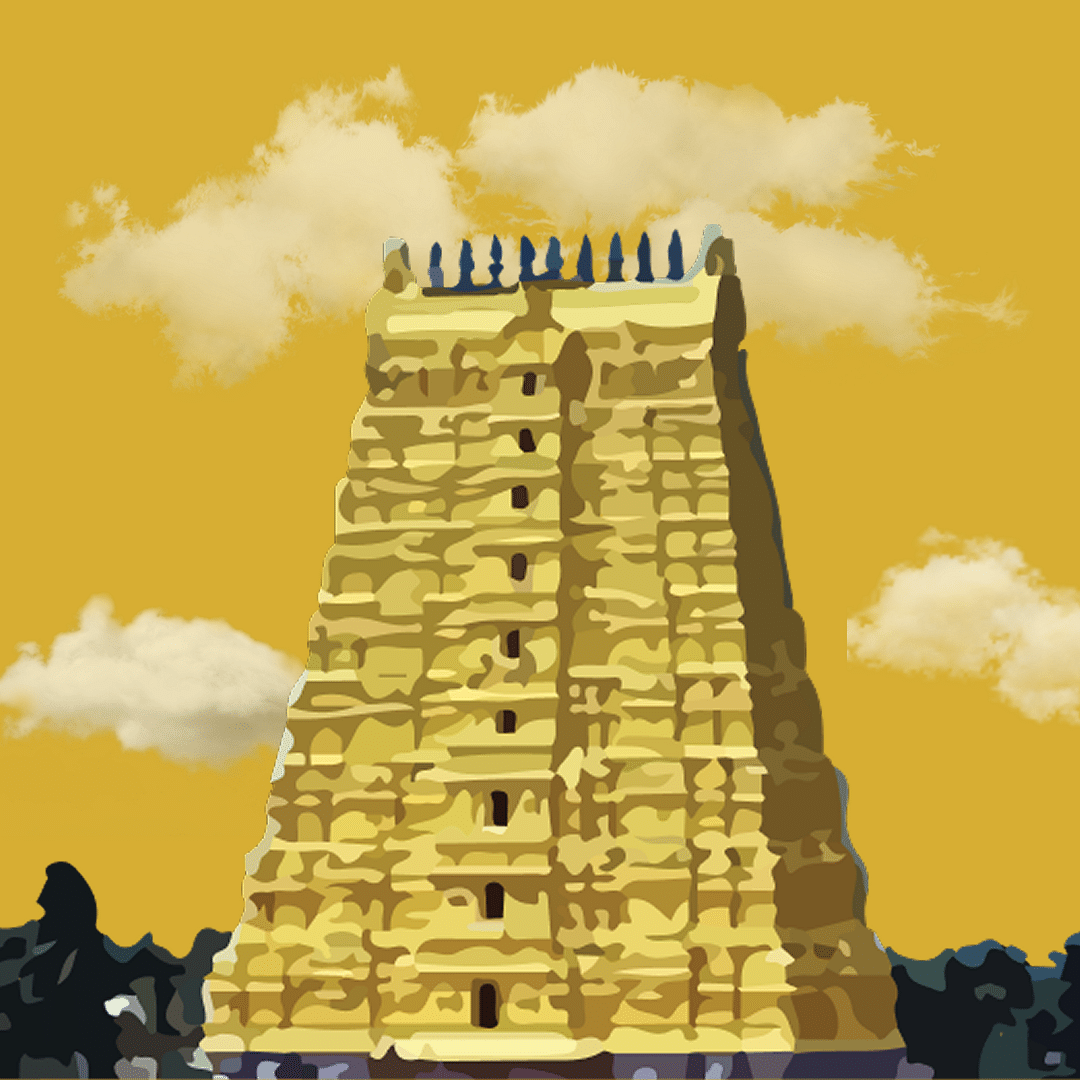Home > The GReaT Divine Darshan > Vellore
HOLY PLACES
IN VELLORE
Vellore, the underdog rockstar of Tamil Nadu, has had more rulers than your Netflix account has users. From Cholas and Nayaks to Marathas and confused colonisers, everyone stopped by—probably because the Vellore Fort was giving major "don’t mess with me" energy. Inside the fort? The stunning Jalakandeswarar Temple, one of the most iconic temples in Vellore, where the carvings are so detailed that even your phone camera gives up. Walk through and you’ll feel like you're on a period drama set. The clock tower here doesn’t just tell time—it tells war stories louder than your aunt at weddings. Hungry? Vellore’s streets are a full buffet: spicy, noisy, and guaranteed to bless your soul (and test your spice tolerance). Even the mangoes here have attitude, and the breeze carries gossip from the 1,700s. Vellore isn’t just a city—it’s a slow burn that sneaks into your heart... like that one filter coffee you didn’t want but ended up loving.
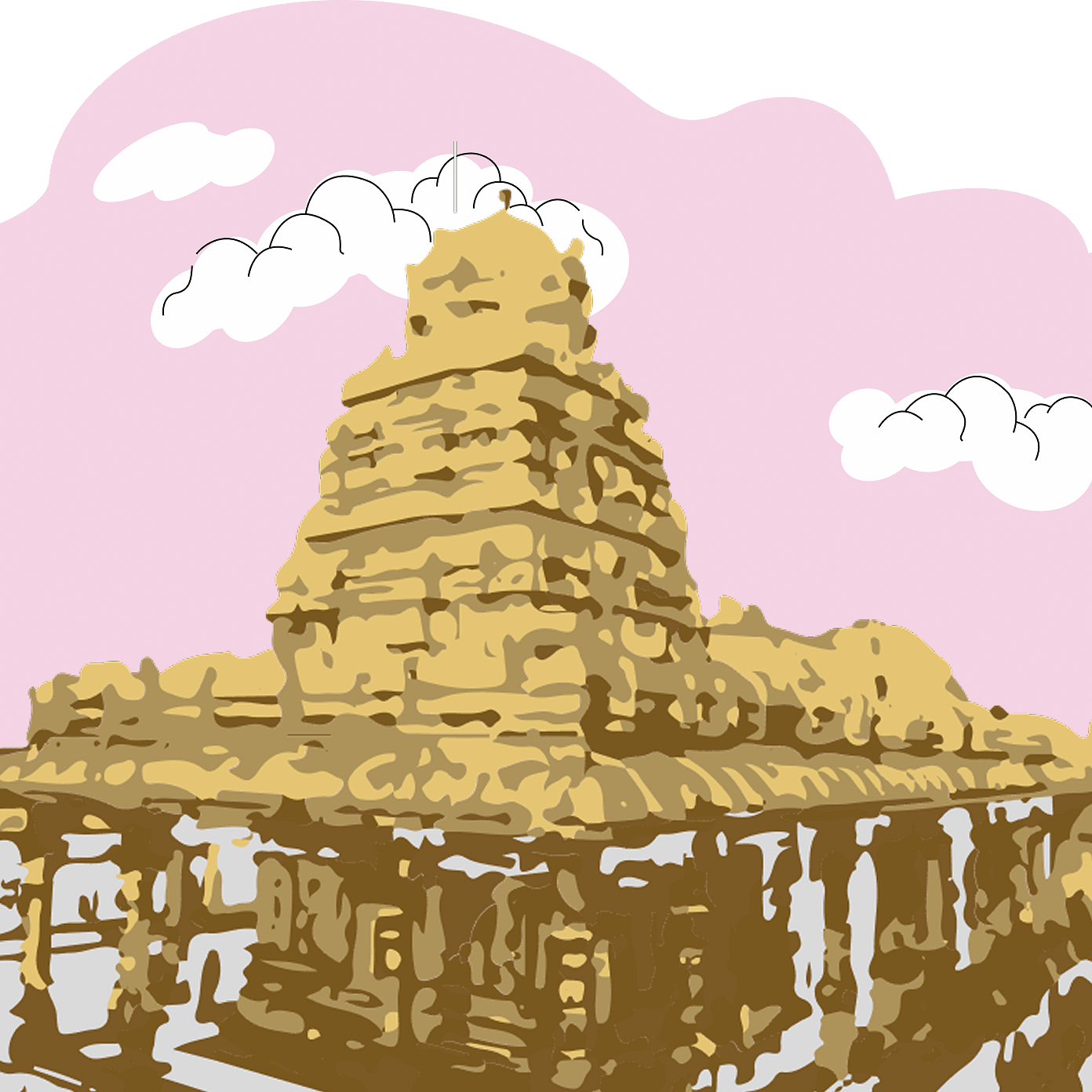
 OUR Hotels
OUR Hotels
IN THE CITY, BY THE SACRED SITES 🏙
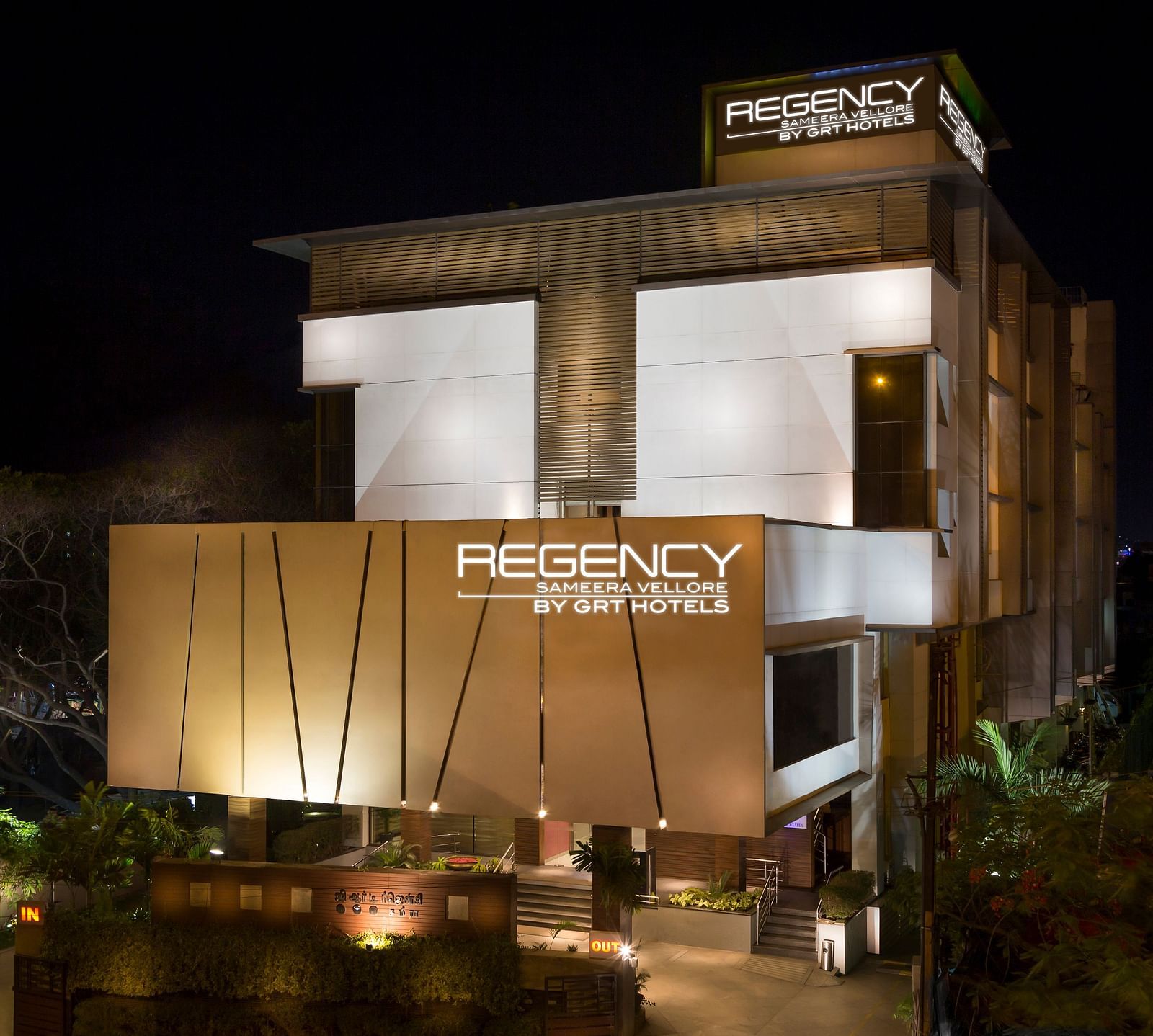
Regency Sameera Vellore by GRT Hotels
Regency Sameera Vellore by GRT Hotels isn’t just a hotel—it’s your chill HQ in the middle of Vellore’s royal drama. With over 50 rooms that whisper “nap now, conquer later", even your travel-worn socks will feel pampered. Got the munchies? We’ve got not one, not two, but three dining spaces—because why settle for one vibe when you can taste-test three? And if you’re here on business? Our meeting rooms mean business, but in a “coffee first, PowerPoint later” kinda way. Location? Oh, we’re winning. Just 4 km from Vellore Fort, so you can go from hotel slippers to warrior vibes in 10 minutes flat. The Golden Temple? A breezy 12 km away—close enough to shine, far enough to snack on the way. So whether you’re chasing history, escaping deadlines, or just in it for the room service, Regency Sameera’s got your back like your favourite playlist. Come for the fort, stay for the fluffiest pillows in town.
 OURDivine Destinations
OURDivine Destinations
TRAVEL THROUGH THE MUSEUMS OF FAITH 🛕
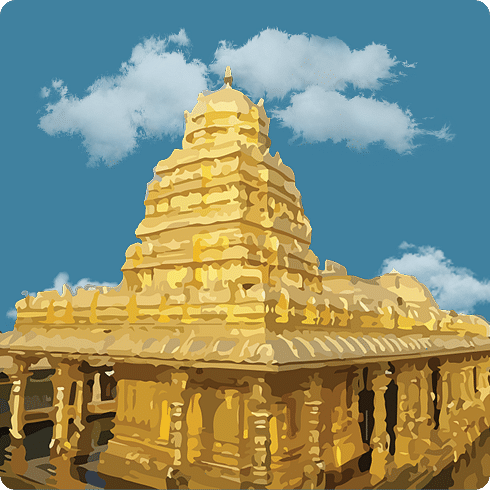
SRI LAKSHMI NARAYANI GOLDEN TEMPLE ✨
Set within the lush Thirupuram Spiritual Park near Vellore, the Sri Lakshmi Narayani Golden Temple dazzles with its gold-clad sanctum, star-shaped spiritual pathway, and a message of unity that transcends faith and form.
Distance from Our Hotel16 km
Timing7:30 a.m. to 12:30 p.m.
4:00 p.m. to 8:00 p.m.FestivalMaha Shivarathri: (Feb-Mar)
Transportation CostFor assistance, please contact the front desk.
Disclaimer: The temple's timings are subject to change as per the operating committee's decisions.
About Sri Lakshmi Narayani Golden Temple:
- The Temple is located within the Thirupuram Spiritual Park at the base of a lush hill range in Thirumalaikodi (also known as Malaikodi), near Vellore, Tamil Nadu.
- It is geographically well-connected, lying 120 km from Tirupati, 145 km from Chennai, 160 km from Pondicherry, and 200 km from Bengaluru, making it accessible from major South Indian cities.
- The temple complex spans approximately 40 hectares (100 acres) of serene green landscape.
- It was constructed by the Sri Narayani Peedam, a Vellore-based charitable trust led by spiritual leader Sri Sakthi Amma, popularly known as Narayani Amma.
- The Maha Kumbhabhishekam (consecration ceremony) of the temple and its presiding deity, Sri Lakshmi Narayani (the Goddess of wealth, power, and prosperity), was held on 24 August 2007.
- The temple is open to devotees of all religions and backgrounds, promoting spiritual unity and universal values.
- The Vimanam and Ardha Mandapam (main sanctum and inner chamber) of the temple are entirely covered in pure gold, showcasing stunning artistry and spiritual grandeur.
- Skilled artisans, trained in traditional temple art, manually created every intricate detail. Gold bars were converted into foil, then mounted over etched copper plates in 9 to 10 layers.
- The temple’s architectural design draws inspiration from the Vedas, with each artistic element holding spiritual symbolism and meaning.
- The layout features a star-shaped pathway (Sri Chakra), which stretches over 1.8 km, symbolising the spiritual journey towards the divine.
- As visitors walk along this star path to reach the sanctum, they encounter spiritual messages and insights displayed along the way, encouraging introspection and reflection on life, purpose, and devotion.
RATNAGIRI ARULMIGU MURUGAN TEMPLE ✨
Perched atop Ratnagiri Hill near Arcot, this historic Murugan temple blends Chola-style architecture, Tamil rituals, and centuries of spiritual heritage amidst the hills of Ranipet.
Distance from Our Hotel13 km
Timing6:00 a.m. to 1:00 p.m.
4:00 p.m. to 8:00 p.m.FestivalAdi Krittikai: (Jul-Aug)
Adi Velli: (Aug-Sep)
Kanda Shashti: (Oct-Nov)
Panguni Uttiram: (Mar-Apr)
Thai Poosam: (Jan-Feb)Transportation CostFor assistance, please contact the front desk.
Disclaimer: The temple's timings are subject to change as per the operating committee's decisions.
About Ratnagiri Arulmigu Murugan Temple:
- This temple is located atop Ratnagiri Hill in Kilminnal, near Arcot in the Ranipet district, close to Vellore, Tamil Nadu.
- The temple is dedicated to Lord Murugan, the revered deity of youth, wisdom, and war in Tamil Hindu tradition.
- It was originally built in the 14th century by Arunagirinathar, the Tamil Saiva saint and poet, who praised the temple in his hymns.
- The temple was renovated in 1980 by Bala Muruganadimai Swamy, a devotee and spiritual leader, who restored and enhanced the temple’s spiritual and architectural presence.
- The main idol of Bala Murugan is installed in a granite chariot, a unique feature reflecting traditional Chola-style architecture.
- The garbhagriha (sanctum sanctorum) is also constructed from granite and exhibits Chola temple design elements.
- The temple complex also includes two shrines for Lord Vinayaka (Ganesha)—one at the hilltop and another at the base of the hill.
- Surrounding the sanctum, the inner prakaram (corridor) features idols of Lord Ganesha, Dakshinamurthy, Lord Brahma, Goddess Durga, and Chandikeswarar, each placed in small niches along the granite walls.
- A prominent feature of the temple is its grand gopuram (entrance tower), which welcomes devotees at the base of the hill.
- Uniquely, all poojas (rituals) and devotional services at this temple are conducted in Tamil, deviating from the usual practice of using Sanskrit, making it more accessible to local devotees.
Divine Facts:
Once upon a not-so-ordinary morning, 27-year-old Sachidanandan, a clerk with a steady job and a spiritual heart, climbed up Ratnagiri Hill to offer his prayers to Lord Murugan. What he found, though, wasn’t divine splendour—but a temple that looked like it had taken an unscheduled nap. No lamps were lit, no incense was burning, and even the flowers had called in sick. Disheartened but determined, he circled the shrine with a heavy heart. And then, in a moment of pure spiritual awakening, something shifted. A wave of golden light filled his mind, and clarity dawned—not just the meditative kind, but the life-altering, “your new calling starts now” kind. Right then, Sachidanandan transformed into Swami Balamurugan Adimai, swapped his day job for divine duty, and took a vow of silence. He declared he wouldn’t leave until the temple was restored to its true glory, worthy of Murugan himself. From that day on, he never left the hill. He offered prayers, food, and guidance to every visitor who came by. What began as a small shrine of just 200 sq. ft. grew into a majestic 30,000 sq.ft. temple.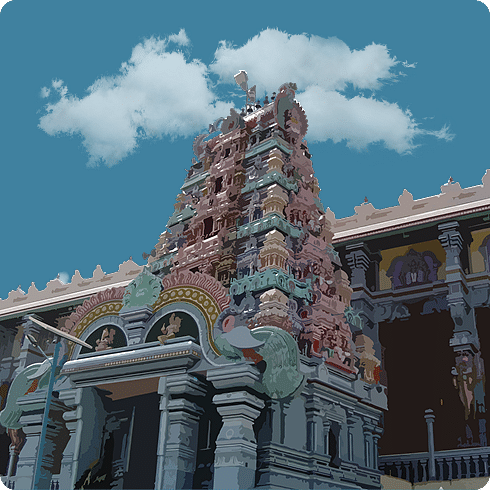
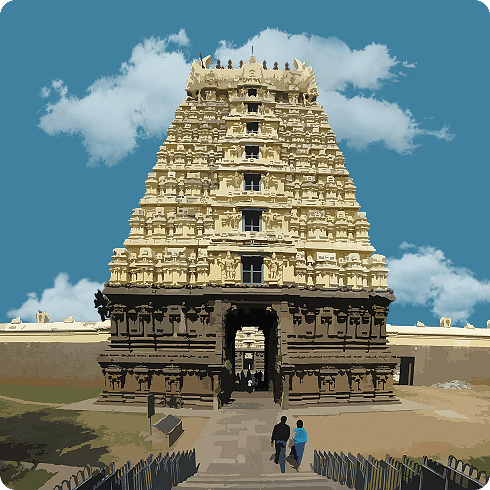
JALAKANDESWARAR TEMPLE, VELLORE ✨
Set within the historic Vellore Fort, Jalakandeswarar Temple is a 16th-century Dravidian shrine dedicated to Lord Shiva, blending rich heritage with revived worship.
Distance from Our Hotel3 km
Timing6:30 a.m. to 8:30 p.m.
FestivalChitra Poornima: (Apr-May)
Surasamharam: (Oct-Nov)
Aadi Pooram: (Jul-Aug)
Vinayaka Chaturthi: (Aug-Sep)
Navratri: (Sep-Oct)Transportation CostFor assistance, please contact the front desk.
Disclaimer: The temple's timings are subject to change as per the operating committee's decisions.
About Jalakandeswarar Temple:
- This temple was constructed in the 16th century during the reign of the Vijayanagara Empire, showcasing exquisite Dravidian architectural style.
- The temple was built within the Vellore Fort, which was a significant military and administrative centre during the Vijayanagara rule.
- The name Jalakandeswarar is derived from the Sanskrit words 'Jala' (meaning water) and 'Kandeshwarar' (a name for Lord Shiva), as the temple is believed to have been built near a water body or spring.
- Over the centuries, the temple served as a spiritual centre for Shaivite worship, attracting devotees from the surrounding regions.
- In the early 20th century, particularly in 1921, the Archaeological Survey of India (ASI) took over the maintenance of the temple as part of its protection and conservation of historic monuments.
- For nearly 400 years, the temple remained non-functional for daily worship, due to various socio-political and religious circumstances.
- In more recent decades, the temple was reopened for active worship, reviving its spiritual and cultural legacy in the region.
- Today, the temple functions as both a historic monument under the ASI and a living place of worship, with daily rituals, festivals, and cultural activities drawing devotees and tourists alike.
Divine Facts:
Once upon a time—long before GPS and Google Maps—Lord Shiva decided to pick a rather unexpected real estate spot: right under a giant anthill, surrounded by puddles of rainwater. Not exactly prime temple property, but clearly, the divine has a taste for dramatic entrances. The anthill had grown so massive over time that even the local squirrels probably paid rent. But beneath that humble mound lay a swayambhu Shiva Lingam, quietly biding its time beneath nature’s camouflage and stagnant rainwater. Enter Chinna Bommi Reddi, a chieftain of the Vijayanagara Empire, who—unlike most landlords—paid attention to his dreams. When he received a divine nudge from above (or below), he didn’t hesitate. Out went the anthill, and up rose one of the grandest temples of its time. Built in 1550 AD, during the rule of Emperor Sadasivadeva Maharaya, the temple was named Jalakandeswarar, meaning 'Lord Shiva of the Water', because of the Lingam’s rather splashy origins. Not only did they build a temple around it, but they also brought in Sri Akhilandeshwari Amma, completing the divine duo. Set within the majestic Vellore Fort, the temple has stood as a reminder that even the simplest places—an anthill in a puddle—can become a sanctum of power, beauty, and spiritual calm… as long as you’ve got faith, patience, and a good chief with initiative.SRI MARGABANDEESWARAR TEMPLE ✨
Believed to have originated during the Rashtrakuta era, this ancient temple was later shaped by Pallava and Chola contributions.
Distance from Our Hotel14 km
Timing6:00 a.m. to 12:00 p.m.
4:30 p.m. to 8:00 p.m.FestivalTheerthavari: (Mar-Apr)
Maha Shivaratri: (Feb-Mar)
Navarathri: (Sep-Oct)Transportation CostFor assistance, please contact the front desk.
Disclaimer: The temple's timings are subject to change as per the operating committee's decisions.
About Sri Margabandeeswarar Temple:
- The origins of Sri Margabandeeswarar Temple are believed to be traced back to the Rashtrakuta period, making it one of the oldest temples in the region with deep historical roots.
- During the 9th century AD, Nandhi Vikrama Pallava is said to have contributed to the early structural foundation of the temple.
- In the 10th and 11th centuries, the Chola kings played a significant role in the temple’s development. Raja Raja Chola, Rajendra Chola, and Parantaka Chola made notable contributions by expanding the sanctum and enhancing the architectural design.
- Sambara Rayan, the viceroy of Kulothunga Chola, is believed to have been involved in extending the temple complex during this period.
- The temple came to be known as 'Naimi Charayanam', as it served as a spiritual retreat where sages would gather for meditation and philosophical discussions.
- In the 13th century, the temple saw major renovations under the patronage of the Chola kings. The present-day structure, including the Swayambhu Shiva Lingam slightly tilted towards the northeast, dates back to this time.
- The temple is named after Lord Shiva in the form of Margabandeeswarar, the divine guide who shows the righteous path. The goddess enshrined here is Maragathambal, an aspect of Goddess Parvati.
- The site earned the name Virinchipuram as Lord Brahma, known here as Virinjan, is believed to have worshipped Lord Shiva at this very location.
- During the 14th to 16th centuries, the Vijayanagara rulers such as Narayana Sambuvarayar, Achutharayar, and Devarayar contributed to the temple’s expansion, adding new shrines and enhancing the existing architecture.
- The Bomma Nayakars, who also built the Jalakandeswarar Temple in Vellore, made significant extensions to this temple, including the ornate Kalyana Mandapam.
- A popular legend states that Lord Shiva appeared here as Raththuna Nathar, along with Goddess Gauri (Maragathambal), after their divine reunion, adding spiritual significance to the site.
- The temple is also known as Baskara Kshetram, as the Sun God is believed to worship the Shiva Lingam with his rays falling directly on it during the Tamil month of Panguni.
- Renowned for its artistic stonework, intricately carved pillars, majestic Rajagopurams, and divine ambience, the temple attracts devotees and art lovers alike.
- Today, this temple is recognised as a Monument of National Importance and is preserved by the Archaeological Survey of India (ASI) for its historical and architectural significance.
Divine Facts:
Once upon a time, Brahma, the Creator, was given a task — to find the top of Lord Shiva, who had taken the form of an endless pillar of fire at Tiruvannamalai. But after flying for what felt like an eternity, he couldn’t find the end. Instead of accepting defeat gracefully, he spotted a Thazhamboo flower falling from Shiva’s locks and decided to stretch the truth. He claimed he had seen the top and used the flower as false evidence. Lord Shiva, however, was in no mood for such creative storytelling. As a result, the Thazhamboo flower was banned from Shiva worship, and Brahma didn’t quite earn points for honesty. In his next birth, Brahma returned with a more humble script — this time as Shiva Sharman, the son of a temple priest. After his father passed away, he took over the sacred duties at the temple with deep devotion.One day, while preparing for the abishekam, Shiva Sharman lifted the Tirumanjanam pot but realised he couldn’t reach the head of the Shiva Lingam — the struggle of being a short devotee in a tall world. Seeing this, Lord Shiva, ever compassionate, gently bent His head so the boy could perform the ritual with ease. Since then, the Lord has remained in that form, slightly tilted to the side, and is worshipped as Marga Bandhu Easwarar — the divine guide who not only leads the way but also bows to bless those who serve with sincerity.
